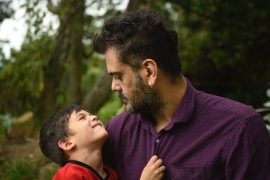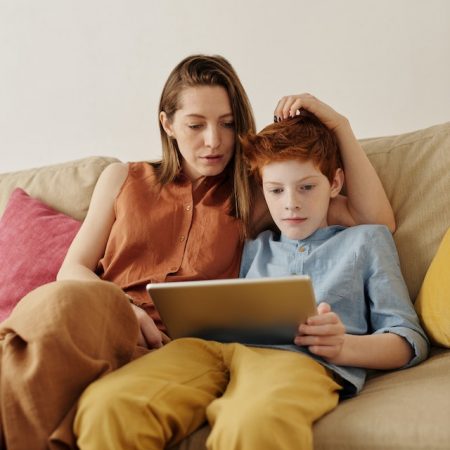
By
Lauren Eldridge, LCSW CADC
Here at The OCD and Anxiety Center, our intake department receives many calls from caring parents, seeking treatment for their child’s anxiety. It is not uncommon, during these initial phone calls to hear parents expressing concerns like these: “My son/daughter has tried therapy before, and it hasn’t worked,” or “We need to do something, but they are not willing to participate.” If you are the parent of a child with anxiety and you can relate, we are here to help!
 Anxiety disorders are the most prevalent mental health conditions that are being diagnosed and treated in the child and adolescent populations today. Some common anxiety disorders that youth are experiencing are generalized anxiety, OCD, social anxiety, specific phobias, and separation anxiety to name a few. Anxiety disorders cause more than just discomfort for our children; they are correlated with significant challenges in academic, social, and family functioning, as well as low self-esteem. If untreated, childhood anxiety is strongly correlated with later additional mental health diagnoses, like major depressive disorder and substance use disorders.
Anxiety disorders are the most prevalent mental health conditions that are being diagnosed and treated in the child and adolescent populations today. Some common anxiety disorders that youth are experiencing are generalized anxiety, OCD, social anxiety, specific phobias, and separation anxiety to name a few. Anxiety disorders cause more than just discomfort for our children; they are correlated with significant challenges in academic, social, and family functioning, as well as low self-esteem. If untreated, childhood anxiety is strongly correlated with later additional mental health diagnoses, like major depressive disorder and substance use disorders.
Cognitive Behavioral Therapy with a focus on exposure therapy is considered the treatment of choice for youth experiencing anxiety. Oftentimes, people believe that therapy involves dropping the child off to therapy for an hour and picking them up. We find that the most effective treatment plans heavily incorporate parents. This is not only helpful for children who are resistant or don’t want to participate but also for children who are willing participants. Teaching parents about anxiety, what maintains anxiety, how to manage it in the home, how to push treatment, how to help children with therapy assignments, how to help children do difficult things or things they don’t want to do is very important to the treatment process. Oftentimes, we get parents who call who are unable to get their kids into therapy. We tell them that a lot of the work can be done without the child, and we can begin with the parent training portion. This portion alone is beneficial in producing change and a reduction in anxiety. We simply believe that parents are necessary participants in the therapy process for progress to happen. This is surprising to many parents who have spent a lot of time just dropping their children off and do not know much about what is happening in the treatment process.
We model our approach from The SPACE approach (Supportive Parenting for Anxious Childhood Emotions). This is a parent-centered therapy approach that teaches parents how to reduce family accommodation and improve anxiety by focusing on the interactions and underlying dynamics between parent and child. It is a structured intervention with eight treatment parts and 5 session modules, that also allows flexibility to address individualized concerns that might arise throughout treatment.
There are many great benefits to using a SPACE approach in the treatment of childhood and adolescent anxiety. First, it targets family accommodation, which is shown
to be a major contributing factor to maintaining anxiety and it does not require the child’s buy-in. Parent accommodation happens when mom or dad changes their behavior in a way that attempt to prevent or reduce child distress associated with participation in age-appropriate activities and/or exposure to a feared or avoided situation. Helping parents learn about how accommodation promotes anxiety is helpful across the board, not only with treatment resistant kids. When parents knowingly or unknowingly accommodate their child’s anxiety by providing reassurance, following child-assigned anxiety-related rules, modifying the family schedule, or permitting avoidance, they can be undermining the effectiveness of any treatment that the child is getting and working against their goals.
Using the SPACE method can also reduce some of the stress and tension felt in families who might have a child that is resistant to treatment. Therapy teaches us to focus on things that are within our control, as nice as it would be to believe that a child’s behavior is within our control, that is simply just not true. SPACE helps parents who might be feeling helpless and frustrated to focus on their behaviors and things that they can control- leading them to feeling more confident and empowered in fighting against their child’s anxiety.
Click here for more information on Childhood Anxiety Treatment.
Flessner
CA, Freeman JB, Sapyta J, Garcia A, Franklin ME, March JS, Foa E. Predictors of
parental accommodation in pediatric obsessive-compulsive disorder: Findings
from the Pediatric Obsessive-Compulsive Disorder Treatment Study (POTS)
trial. Journal of the American Academy of Child and Adolescent
Psychiatry. 2011;50:716–725.
Lebowitz et al., Parent Training for
Childhood Anxiety Disorders: The SPACE Program, Cognitive and Behavioral
Practice (2013), http://dx.doi.org/10.1016/j.cbpra.2013.10.004

